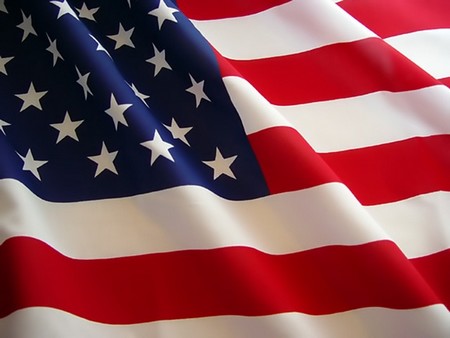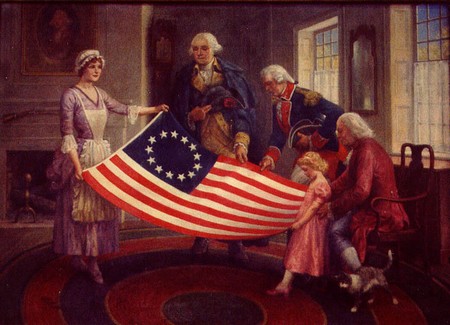2
2009
Who Invented the American Flag
The American flag, a symbol of the enduring power of the United States of America, was first hoisted in 1776 with the Union Jack, the flag of Great Britain in the canton, but in 1777 the United States Congress approved changing the flag, and a short while later the original thirteen stars representing the 13 colonies was adopted and used by American forces in the War of Independence.
America’s first flag was very similar to the flag familiar to all Americans and a fair percentage of foreign nationals in other countries, it had thirteen red and white alternating stripes, and in the canton a blue field with thirteen silver stars, in some flags arranged in a circle, but in others arranged in a grid. In those days many flags were home-made, but in any event it didn’t really matter how the stars were arranged.

Legend tells us that a homely widow named Betsy Ross, who is portrayed in Bugs Bunny cartoons as an elderly and kind woman with a glowing face and grey hair raised in a bun, was the inventor of the American flag. The story is certainly attractive, Betsy was an all American lady whose husband had passed away many years before. Betsy owned a seamstress shop and had supposedly been a neighbor of George Washington.
In 1870 one of Betsy Ross grandsons, William Canby made startling claims that his grandmother had been approached by George Washington, Robert Morris, and George Ross who together represented a flag committee established by Congress to design a new flag that didn’t include the Union Jack. Many people still believe that Betsy Ross was the inventor of the American flag but the Congressional Library has no records of a flag committee, and Betsy Ross herself never claimed to have designed the flag.

Prior to the declaration of independence a secret society of men called the Sons of Liberty used a flag of nine alternating red and white stripes that were vertical instead of horizontal. Many historians believe the American flag was based on this, although the first US flag with the Union Jack is almost identical to the flag of the British East India Company.
Another American, who is just as deserving of the hero status awarded to the inventor of the American flag was Francis Hopkinson, a Congressman and one of the signatories of the Declaration of Independence. Hopkinson designed the Great Seal of the United States, and was also chairman of a Navy board department in 1776-7 when the navy was tasked with creating a flag for the US.
Invoices from Hopkinson which were rejected by Congress for his work on the flag design on the grounds that he had already been paid for his time as a Congressman, the wording suggesting Congress had no issue with him as the designer, only with him wanting to be paid twice.

 An article by
An article by 




